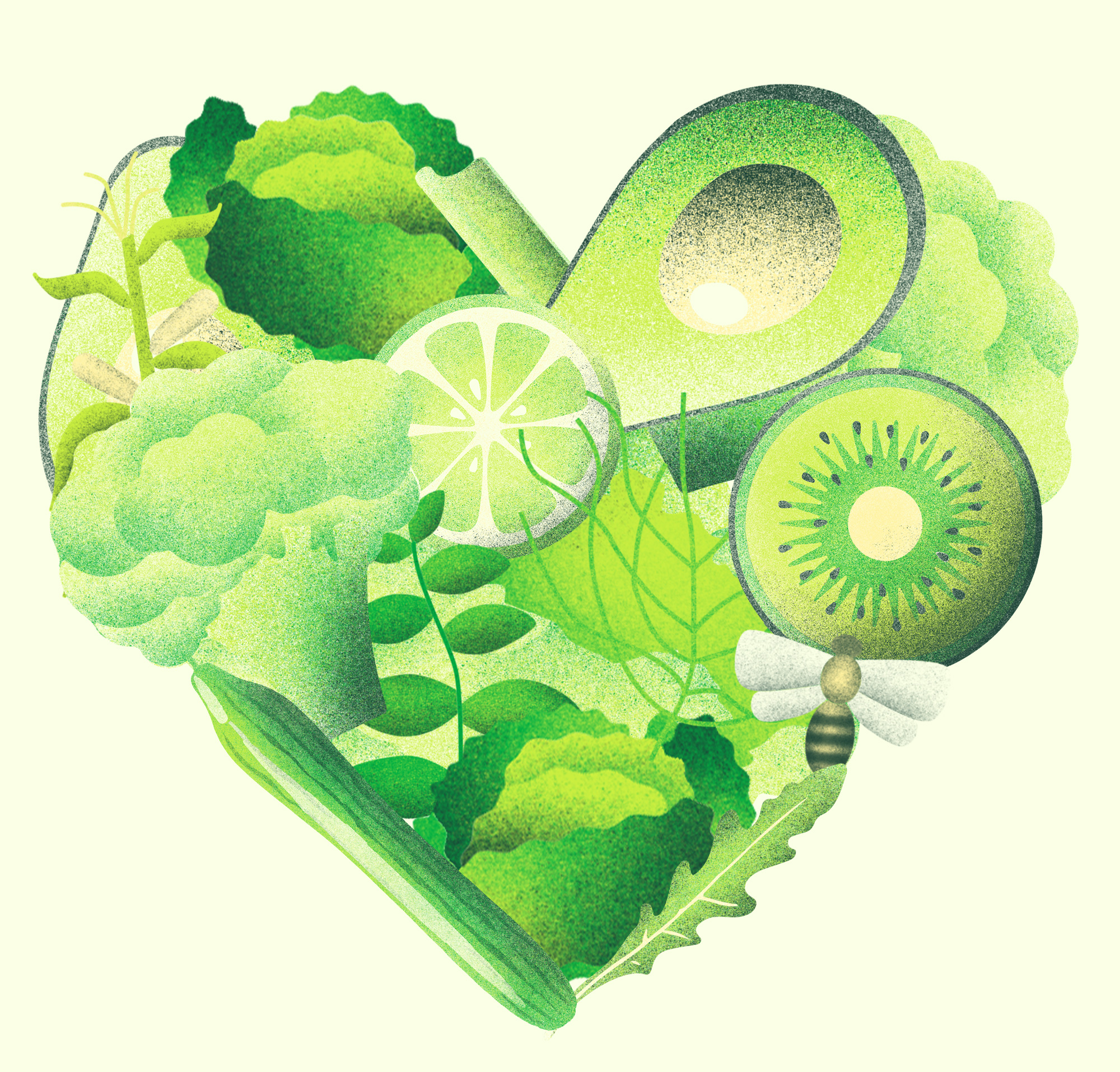Soil health and the future of our food system
What is soil health?
Our food system depends on a complex food web that includes all living organisms. And plants are an integral part of this web — they capture renewable sunlight and carbon dioxide and turn it into fuel that sustains and powers other living organisms. But plants need more than just sunlight to survive; they also need water, nutrients, and protection from the elements and extreme temperatures. Most plants access these resources and find this protection in the soil.
Soil is not just a pile of dirt — it is a complex physical, biological, and chemical system that contains its own food web made up of fungi, microbes, earthworms, and insects. These organisms depend on plants for safety and food in the form of carbohydrates and sugars. In exchange, the organisms break up the soil, protect the plant, and deliver essential nutrients and minerals to the roots, helping the plants grow deep root systems and healthy, nutrient-dense fruits. Most of this nutrient cycling activity happens in the topsoil — the critical first few inches to feet of the soil that is rich in nutrients and organic matter. Without topsoil and a thriving soil food web, growers struggle to produce the crops we rely on, making this an essential cornerstone of our food system.
What’s going on with soil health today?
However, instead of preserving the soil food web, many modern agricultural practices disrupt its delicate symbiotic relationships. This disruption is an unintended consequence of previous innovations that contributed to the Green Revolution. This third agricultural revolution saw the development of new, high-yielding varieties of staple crops, which meant that food production could rapidly increase. But along with this came the industrialization of our food system since the high-yielding varietals were dependent on chemical fertilizers, crop protectants, and mechanized farming, and less able to fight off pests and diseases on their own or to adapt to changing conditions. These varietals also have shallower root systems, so they are less able to hold onto soil and prevent erosion. These shallow root systems, plus the chemicals and practices used to keep these varietals alive, are disruptive to that delicate soil food web. As a result, our rich, productive topsoil is turning back into dirt and eroding before our eyes.
The Current State: Soil degradation at an unsustainable rate?
The FAO estimates that 95% of the food we eat is directly or indirectly dependent on soil. But 90% of our soils are at risk of erosion by 2050 if we don’t change our growing practices. And we are truly sowing the seeds of our own destruction by continuing to farm the way we have been. Some examples:
- Tilling our fields and destroying the health of soils releases carbon stored in the soil into the atmosphere. This carbon contributes to climate change which creates inhospitable temperatures, droughts, and extreme weather events that further jeopardize food production. Improving soil health and soil management techniques to not only reduce CO2 emissions, but also turn our soils into a net carbon sink, is essential to keep the food system (and all of our systems) within the Greenhouse Gas Emissions planetary boundary.
- Degraded soil means that plants get fewer nutrients from the soil food web, so we replace them with chemical fertilizers to maintain yields. But these fertilizers further degrade the health of the soil microbiome and the quality of the soil. This contributes to soil erosion, washing these fertilizers into our waterways and oceans, where it causes eutrophication and toxic dead zones. And this also leads to less nutrient-dense food, since food grown in degraded soils is worse for us than food grown in healthy soils. In order to stay within the planetary boundaries for nitrogen and phosphorus use, we need to increase nitrogen use efficiency by at least 30% while increasing phosphorus recycling by at least 50%.
- As our topsoil degrades, we expand our farms horizontally, taking up more land in the search for healthy soils. This, along with chemical fertilizers and crop protectants, disrupts delicate natural ecosystems and contributes to biodiversity decline. Biodiversity is what brings resilience to ecosystems, including the agricultural system. Without it, the system becomes even more vulnerable to diseases and pests, requiring us to use even more chemicals and expand outward even further. Addressing this issue requires us to implement biodiversity friendly farming systems, while sustainably increasing yields on existing farmland and closing the yield gap to at least 90%.
- Of the roughly 6,000 species that we could be cultivating, just nine crops account for two-thirds of food production. We are shifting away from localized production of a diverse set of foods to specialized production of fewer foods. The food system is increasingly international and reliant on imports and exports of seeds, fertilizers and crop protectants, and staple foods themselves. This specialization and globalization decrease resilience in the system and puts food production at risk of being impacted by geopolitics, with potentially dire implications for food security and eliminating world hunger.
We can’t design food out of the system — we all depend on it to survive. Instead, we need to redesign the agricultural system and return to using agricultural practices that regenerate soil health instead of destroying it.
Are you interested in learning more about how Healthy Soils fit into our Theory of Transformation of the global food system? Check out Food is Solvable!
-p-500.webp)





.jpg)






